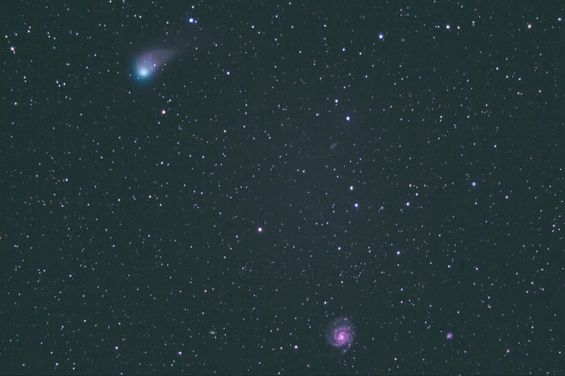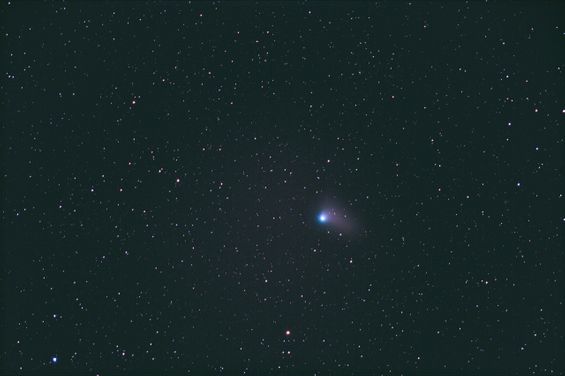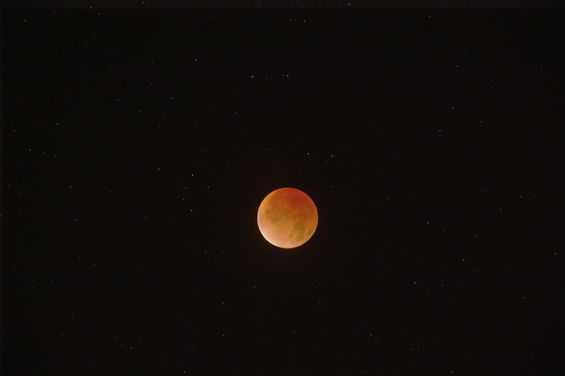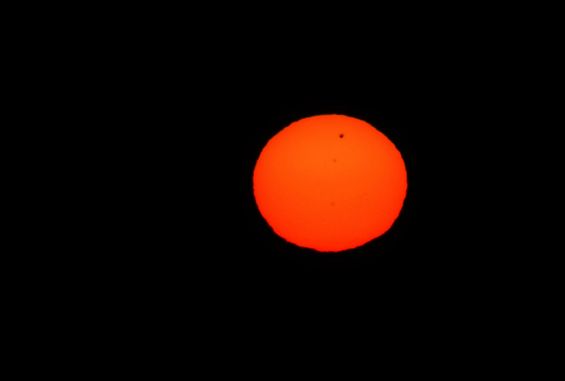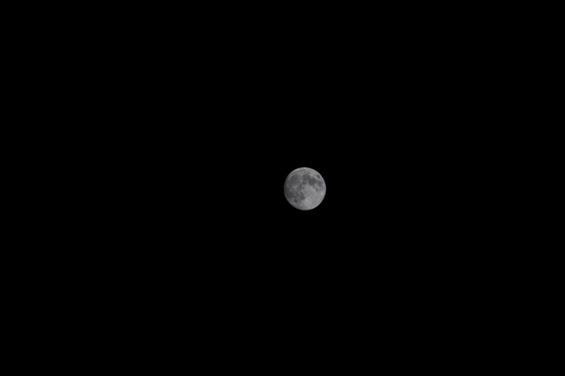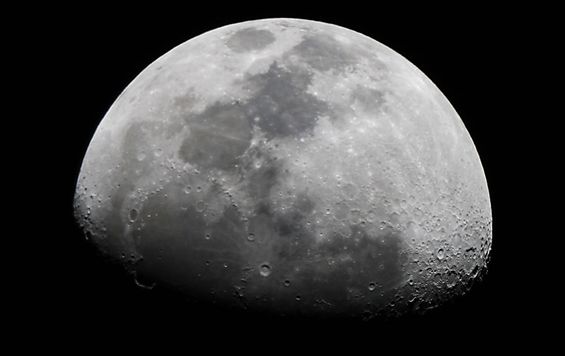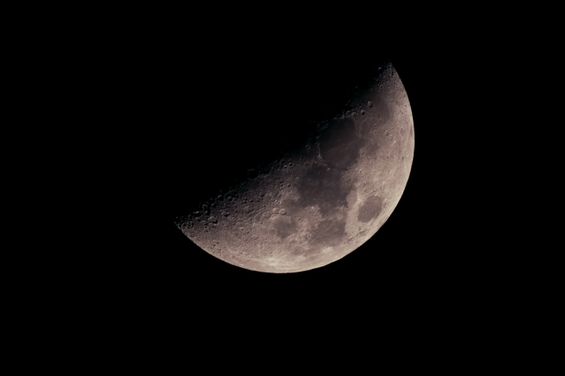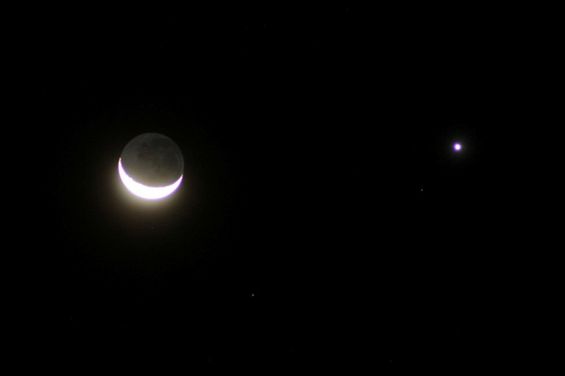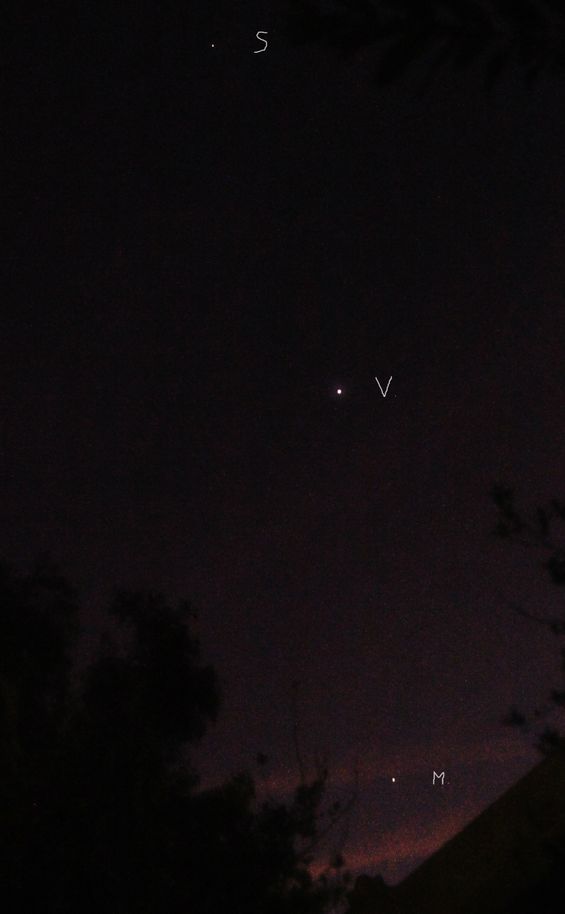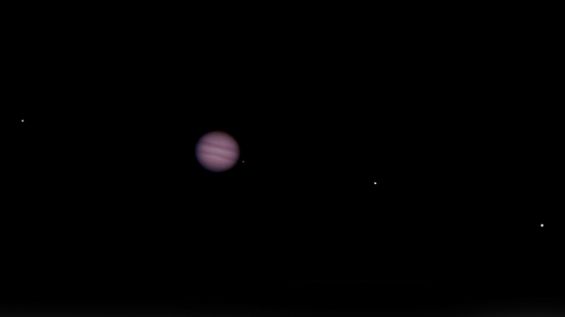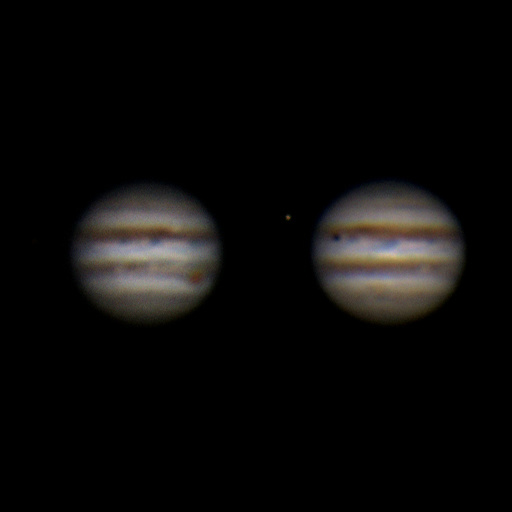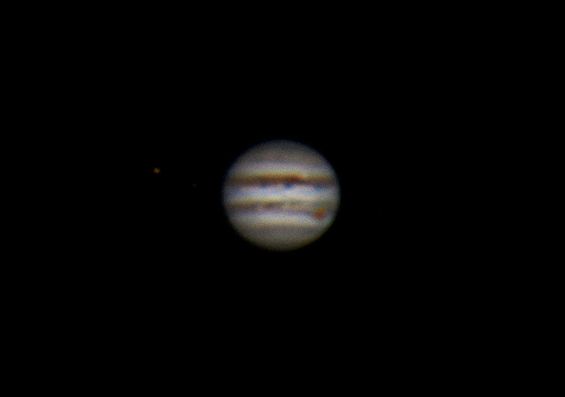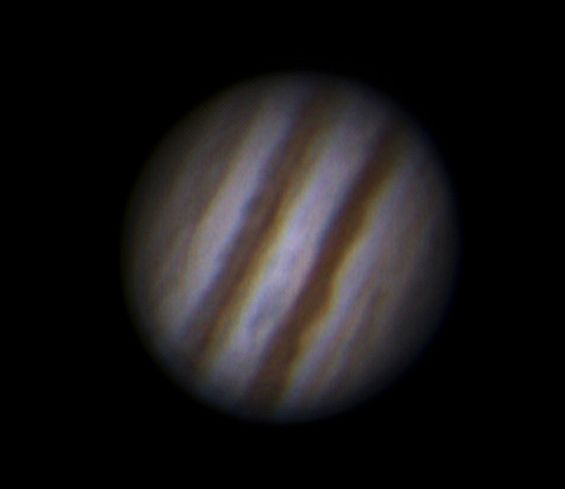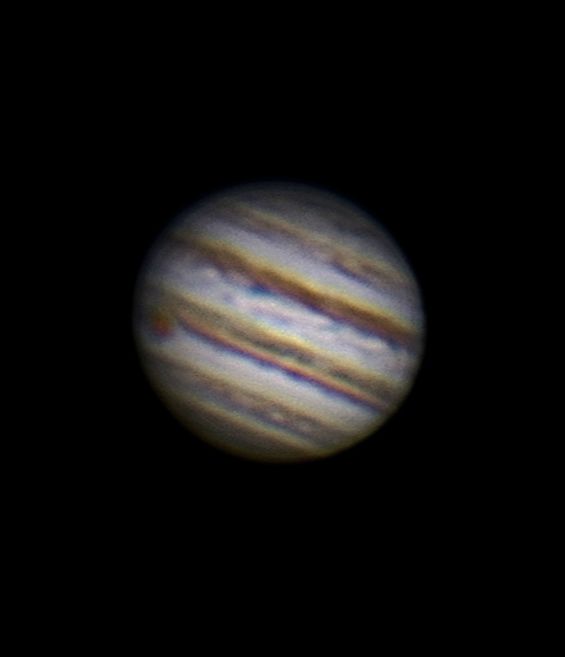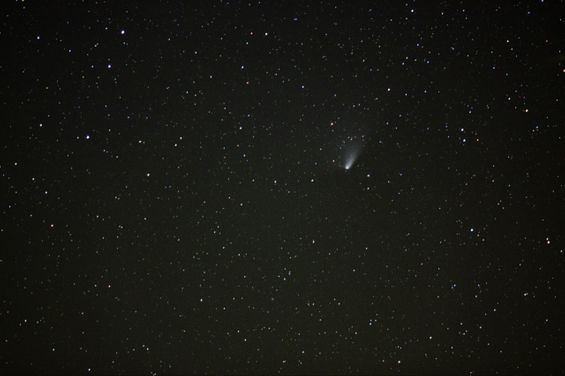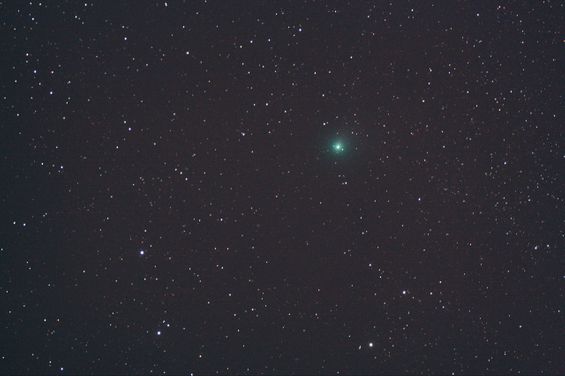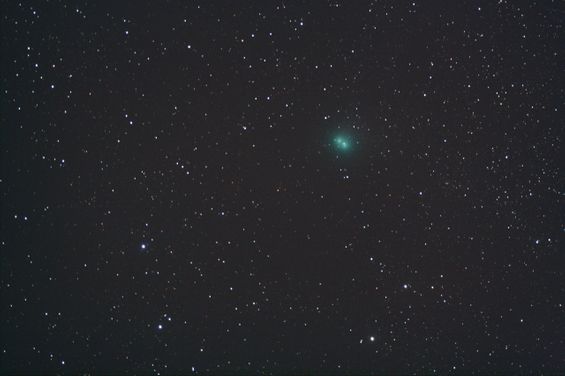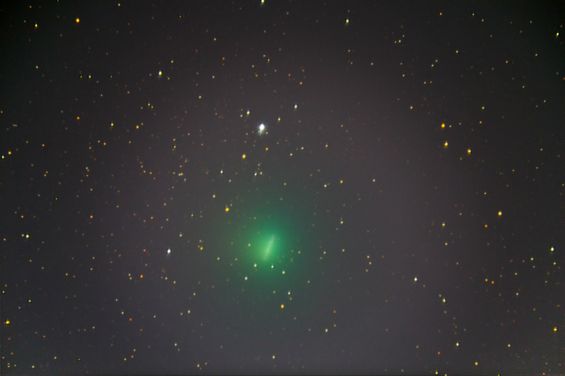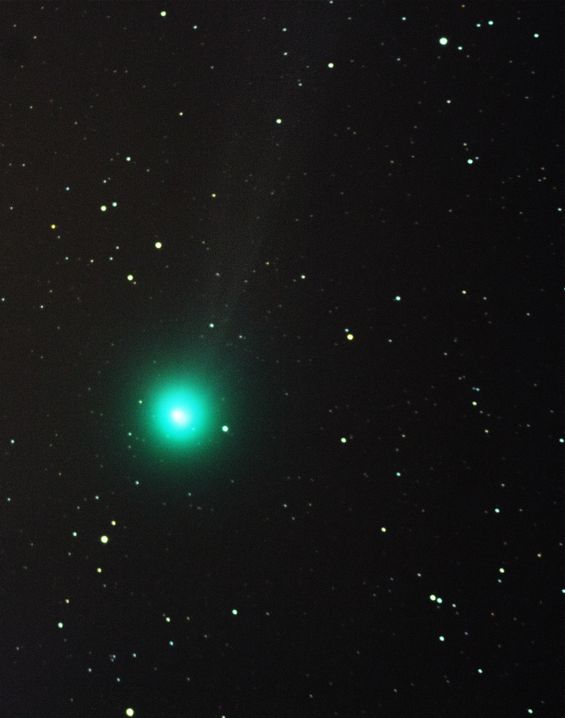Sun, planets, comets
Visit also our mobile website
Comet 46P Wirtanen on Dec 11th 1am 40 km East of Vienna astrophoto taken with Canon EOS 550d modified and Canon 1:2,8 200mm L lens on Astrotrac mount: 1 exp 45 sec ISO 800
Comet Catalina passing close to galaxy M 101(distance 23 mio LY) taken on January 17th 2016. You can also see the galaxies NGC 5474(distance 21 mio LY) right of M 101 and NGC 5422(distance 101mio LY) left of M 101. Asto photo taken with Canon EOS 40d modified and Canon 2,8 200mm L Lens and teleconverter 1,4, stack of 11 exp 70 sec each 3200 ISO
Comet Catalina taken on January 12th 2016. the Comet reached its closest distance to earth with 0,8 AU. Asto photo taken with Canon EOS 40d modified and Canon 2,8 200mm L Lens, stack of 4 exp between 70 and 120 sec
Total eclipse of the Moon Sept 28th 2015 taken with Canon EOS 5d Mk II and 1:2,8 200 mm L and 2x Canon L teleconverter 1x20 sec 3200 ISO f8 1x20 sec 400ISO f8 1x20 sec 100 ISO f8
Venus Transit in 2012, its a very rare event!! The planet Venus is the small dot passing between the Earth and the Sun. In this very rare occasion Venus passes for observers on the Earth directly over the Sun disk and not above or below it. This occasion gives astronomers the opportunity to measure the extremely low reduction in sun light caused by the shadow of the passing planet. That's how astronomers are looking for extraterrestrial planets and life... They are measuring the changes in star light intensity thus deducting existence and size of planets passing in front of other stars. Extremely large and precise telescopes and detectors are required for this Sisyphus work By the way, Venus and Earth are approximately the same size! So, observers from Mars looking at us would see a similar proportion between the small Earth dot and the huge Sun. However there are red and blue giant stars in our Milky Way out sizing the diameter of our sun by the factor 10,100 and even 1000. There diameter would exceed the distance between Sun and Earth by far and even reach the distance to Jupiter thus swallowing planets as close to the giant star as our Earth. Look and feel how small, fragile and protect worthy our home planet is!! Astrophoto taken with Canon and Zeiss 300 tele lens in Lower Austria
The full moon taken with Canon EOS 450d monochrome and Canon 2,8 200mm L
Moon in September 2014, astro photo taken with Celestron C14. astro photo C14
Our moon Astro photo taken with Newton and Canon Magnified detail
Moon taken with 80/480 APO.
Moon and Venus Astro photo taken with Zeiss 300mm tele lens and canon at Emberger Alm, Carinthia, Austria
Planets Mercury, Venus and Saturn in one line after sunset at Luxor, Egypt in December 2012. This is a very rare event
Planet Saturn with moons in 2010, its ring is nearly closed for our perspective. The brightest moon is Titan. Astro photo taken with 10 inch Schmidt Cassegrain
Jupiter with the 4 Galilean moons, Ganymed, the largest of them, is about half the diameter of our Earth but double the diameter of our Moon. Europa, Jupiters smallest moon, is about the size of our Moon(3000 km diameter). Astro photo taken with Celestron C 14 and canon C14 astrophoto
Jupiter astro photos taken with Celestron C 14 and ASI 1034C planetary camera on March 31th 2016 each photo from a 500 sequence. left photo with red spot at 140am and right photo with the moon Ganymed and the shadow of the moon Io at 3am. you can recognize the fast rotation of only 9h55min.
Jupiter astro photo taken with Celestron C 14 and ASI 1034C planetary camera on March 31th 2016 stack of 3 photos from a 500 sequence each
Jupiter astro photos taken with Celestron C 14 and ASI 1034C planetary camera on March 31th 2016 each photo from a 500 sequence. left photo with red dot at 0140am right photo at 0300am on March 31st 2016
Jupiter astro photo taken with Celestron C 14 and ASI 1034C planetary camera at f11 on April 12th 2016 photo from a 2200 sequence
Jupiter astro photo taken with Celestron C 14 and ASI 1034C planetary camera at f22 on April 14th 2016 photo from a 2200 sequence
Jupiter astro photo taken with Celestron C 14 and ASI 1034C planetary camera at f22 on April 21th 2016 photo from a 2200 sequence
Comet Pan Starrs Astro photo taken using Canon 200mm L lens, close to Carnuntum, Lower Austria
Comet Pan Starrs Astro photo taken using Celestron Comet Catcher and Canon close to Carnuntum, Lower Austria
Comet Pan Starrs in Cassiopeia Astro photo taken using Canon 200mm L lens from Braunsberg hill, Hainburg, Lower Austria
Comet C/2014 E2(Jacques) taken with 80/480 triplet APO close to Vienna on Aug 24th 2014. 1 exposure 2 minutes at ISO 800.
Comet C/2014 E2(Jacques) taken with 80/480 triplet APO close to Vienna on Aug 24th 2014. 3 exposures 2 minutes each at ISO 800. During bthe 15 minutes period between these exposures the comet moved quite a lot as can be seen on the stacked asto photo. Jacques is speeding with 80.000km/h or at a speed of 50.000mph
Comet C/2014 E2(Jacques) taken with Celestron C14 close to Vienna on Aug 26th 2014. 3 exposures 4 minutes each at ISO 800. During bthe 15 minutes period between these exposures the comet moved significantly as can be seen on the stacked asto photo.
Comet C/2014 Q2 Lovejoy taken with Canon 600d modified and 80/480 Triplet APO, stack of 4 exposures a 90sec 1600ISO. Its closest distance to Earth was 70 mio km, which is about 200 times the distace to our Moon. The comet will return in about 8000 years
Neueste Kommentare
22.01 | 09:48
Hi Sani, great that you like it . kind regards Peter
22.01 | 09:34
Thank you for the wonderful and educative information and pictures
18.03 | 19:46
Now I understand Thanks
25.06 | 18:02
I like your mobile website too Hans

